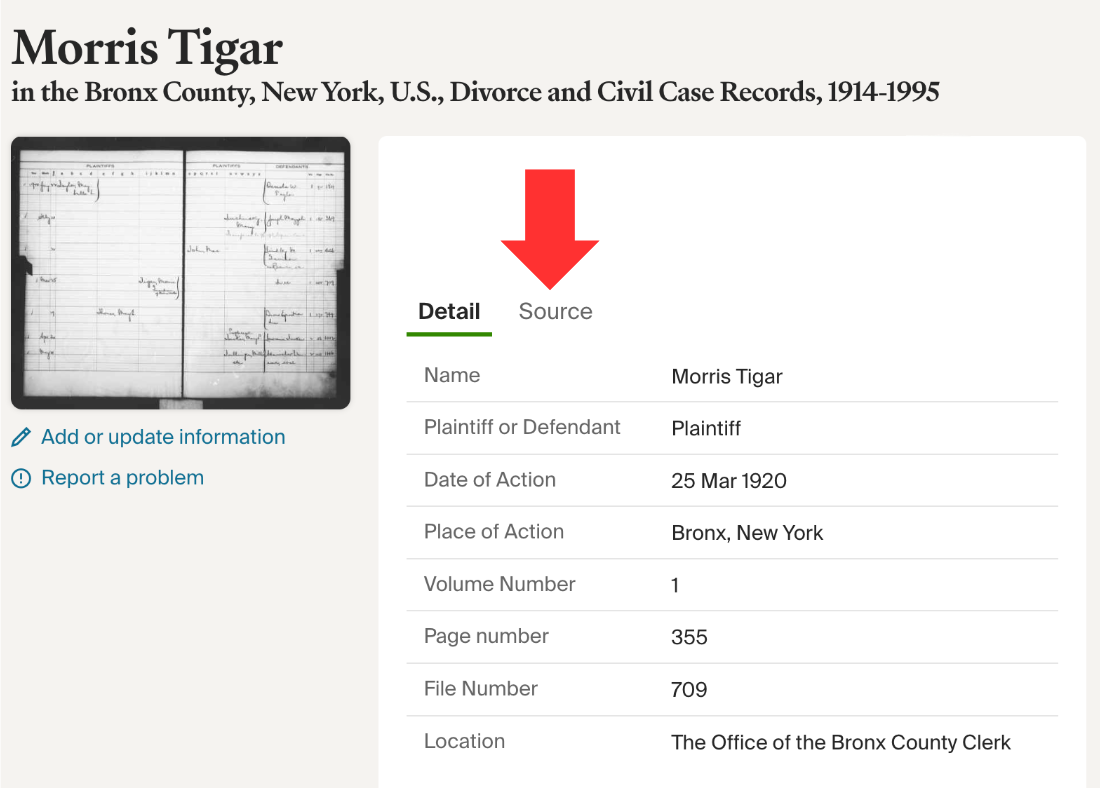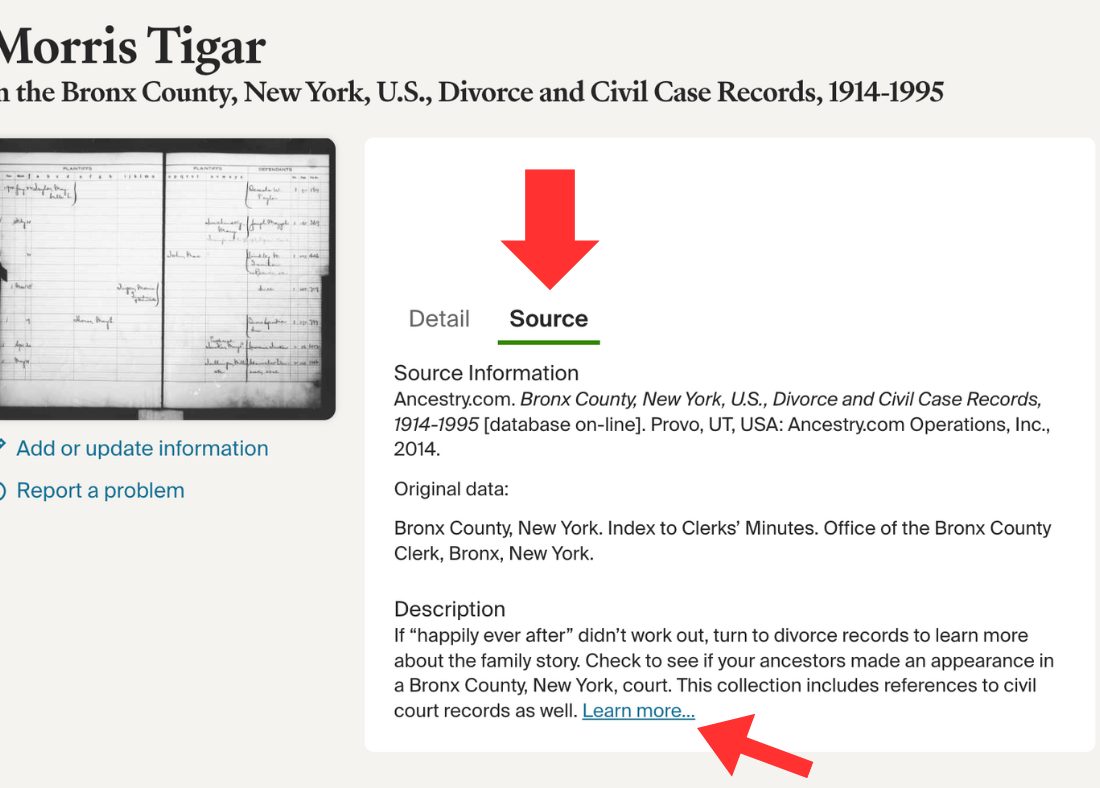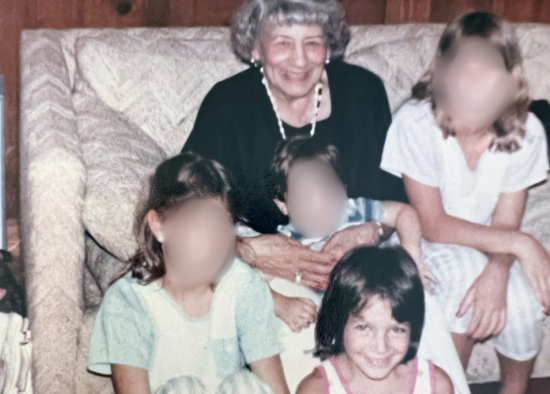Ancestry Hints MAY BE Hiding Family Secrets. Here's How.
My grandfather’s sister had a secret.
When I came across it as part of my research, my jaw dropped. I immediately called my cousins (her grandkids) to see if they had heard about it, and no one had. I am amazed that it was kept out of the papers and that her siblings and parents were able to remain so tight-lipped about it.
Here’s what I found and how I found it, so you can potentially do the same.
You know those Ancestry hints, the innocent-looking green leaves casually waving at you from your family tree? Sometimes they're reliable; other times, they're as trustworthy as gas station sushi. But occasionally, they deliver pure genealogical gold. Or, in my case, a century-old secret.
It began with a leaf next to my great-grandfather Morris Tigar's name. The hint mentioned a divorce case from 1920. Wait, what? Divorce? Morris and my great-grandmother were happily married until the end of their lives.
Something definitely didn’t add up.
Curious, I clicked on the hint. The image of the record raised even more eyebrows. Morris was listed as a plaintiff and guardian of someone named Florence Stutler.
Stutler? Guardian? Why was Morris tangled up in her divorce?
Before we move on, notice that the record transcription said nothing about Florence or guardianship.
Crucial Genealogy Lesson: The transcription may not have all of the record details. Do not stop at the transcription. You have to view the actual record every single time.
Time to dig deeper.
I clicked the “Source” tab on the hint. You should always click on the source information to learn more about the record. It will tell you exactly where the record originated and provide instructions on how to obtain more information.
Click on “Learn More” to expand the details.
When you click on “learn more,” a window opens so you can search the specific record set. We aren’t interested in that right now; we’ve already seen what’s available on Ancestry for this particular record set.
Instead, scroll down towards the bottom of the page. You’re looking for the “About” section to learn more about this specific set of records.
The about section lets us know that if the record is over 100 years old, anyone can request copies of the court documents. It even includes the contact information to request ‘em!
Welp, it’s been more than 100 years since the court date, and the index information in the Ancestry hint gives me everything I need to request the court documents: the file, page, and volume numbers. Using these details and the email address provided, I asked for the court documents related to this case.
About a week later, I received the documents, and everything fell into place.
Turns out Florence Stutler was actually Florence Tigar, my grandfather’s younger sister, then just 16 years old, who’d secretly run off from NYC to Peoria, Illinois, all alone.
Why Illinois?
Glad you asked.
Her sailor sweetheart, Mr. Stutler, was originally from Peoria. After meeting Florence while stationed in NYC, he sent her money and instructed her to come to Illinois to get married, cleverly avoiding the risk of someone checking Florence's age in her hometown.
Somehow, Flo’s mom knew exactly where she had run off to. She went to Illinois and brought Flo back. At that point, my great-grandfather, Morris, Flo’s father, wasted no time filing for an annulment.
Whoa!
I remember my great-aunt Flo. She used to visit us when we were kids, and she wrote many letters to my Mom and Dad over the years. I’ve used her letters to fuel my family research because they contain a wealth of details about her parents and their siblings, all of whom immigrated from Eastern Europe in the late 1800s. There was never any mention of her secret, underage marriage to Mr. Stutler!
As far as any of us knew, her grandkids included, her only marriage was to my great-uncle Max, a doctor from New York.
Just like that, a secret marriage vanished from our family narrative, hiding quietly for a century, until one Ancestry leaf brought it to my attention. But the leaf alone wasn’t enough, nor the record transcription, or the image of the record on Ancestry. I had to keep digging.
The takeaways:
Always dive deeper than the transcribed record: interpreting Ancestry hints requires going beyond the transcribed record.
Don’t overlook the Source tab: it’s the gateway to richer information.
Reach out directly to archives: requesting genealogy records can unlock secrets, and the staff there love helping solve mysteries.
Ready to chase down your own family secrets? Those green leaves are waving at you right now.
And if you hit a wall or get impatient (been there, done that), you know exactly who to call. (Me, it’s me)







